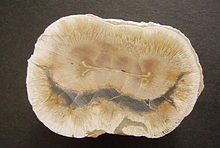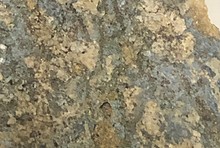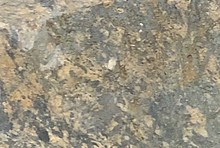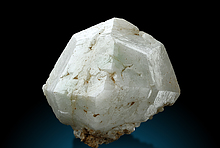Home PageAbout MindatThe Mindat ManualHistory of MindatCopyright StatusWho We AreContact UsAdvertise on Mindat
Donate to MindatCorporate SponsorshipSponsor a PageSponsored PagesMindat AdvertisersAdvertise on Mindat
Learning CenterWhat is a mineral?The most common minerals on earthInformation for EducatorsMindat ArticlesThe ElementsThe Rock H. Currier Digital LibraryGeologic Time
Minerals by PropertiesMinerals by ChemistryAdvanced Locality SearchRandom MineralRandom LocalitySearch by minIDLocalities Near MeSearch ArticlesSearch GlossaryMore Search Options
The Mindat ManualAdd a New PhotoRate PhotosLocality Edit ReportCoordinate Completion ReportAdd Glossary Item
Mining CompaniesStatisticsUsersMineral MuseumsClubs & OrganizationsMineral Shows & EventsThe Mindat DirectoryDevice SettingsThe Mineral Quiz
Photo SearchPhoto GalleriesSearch by ColorNew Photos TodayNew Photos YesterdayMembers' Photo GalleriesPast Photo of the Day GalleryPhotography
╳Discussions
💬 Home🔎 Search📅 LatestGroups
EducationOpen discussion area.Fakes & FraudsOpen discussion area.Field CollectingOpen discussion area.FossilsOpen discussion area.Gems and GemologyOpen discussion area.GeneralOpen discussion area.How to ContributeOpen discussion area.Identity HelpOpen discussion area.Improving Mindat.orgOpen discussion area.LocalitiesOpen discussion area.Lost and Stolen SpecimensOpen discussion area.MarketplaceOpen discussion area.MeteoritesOpen discussion area.Mindat ProductsOpen discussion area.Mineral ExchangesOpen discussion area.Mineral PhotographyOpen discussion area.Mineral ShowsOpen discussion area.Mineralogical ClassificationOpen discussion area.Mineralogy CourseOpen discussion area.MineralsOpen discussion area.Minerals and MuseumsOpen discussion area.PhotosOpen discussion area.Techniques for CollectorsOpen discussion area.The Rock H. Currier Digital LibraryOpen discussion area.UV MineralsOpen discussion area.Recent Images in Discussions
Identity HelpPolytype pseudomorphs
1st Mar 2012 14:14 UTCReiner Mielke Expert

1st Mar 2012 14:33 UTCAlfredo Petrov Manager
1st Mar 2012 17:29 UTCRob Woodside 🌟 Manager
I suspect that most hexagonal looking xls of pyrrhotite are twinned monoclinic xls (as in mica). To know what polytype you have, you really have to x-ray the sample. It would be cute if you could spot a hexagonal polytype with its zero net magnetic moment. The pyrrhotites from Henderson # 2 are perhaps the most x-rayed pyrrhotites. They are long slender monoclinic prisms that look nothing like pyrrhotite except for the colour. There are presumably other localities.
1st Mar 2012 17:54 UTCReiner Mielke Expert
Troilite is not considered a polytype of pyrrhotite, it is a separate species. According to Dekkers, M.J. 1988, Magnetic Properties of Natural pyrrhotite, Physics of the Earth and Palnetary Interiors, 52,376-393, Elsevier Science Publishers. Three hexagonal polymorphs 5C,11C, and 6C are antiferromagnetic ( not attracted to a magnet) and monoclinic 4C is ferrimagnetic ( attracted to a magnet).
Hello Rob,
Thanks for the info on the Henderson xls, sure would like to get one of those monoclinic crystals. I guess any hexagonal magnetic Pyrrhotite would have to be a twin then. Do you know of any non-magnetic hexagonal crystals? There appears to be a discrepency between the list of polytypes in Mindat and the published data. I questioned this on a different thread a while ago and got no response http://www.mindat.org/forum.php?read,7,251419,251899#msg-251899 Do you know anything about this?

1st Mar 2012 18:26 UTCAlfredo Petrov Manager
As for the status of troilite, "considered" may be the important word here. It's really pyrrhotite-2H, and doesn't deserve species status, but it gets "considered" independently, much like several other "species" (eg; augite, actinolite...) for historical convenience more than any particular mineralogical reason. Eventually the historical inertia gets overcome and these things tend to get properly reclassified (like the intermediate plagioclase feldspar varieties finally were, much to the horror of petrographers), but it can take a while - I prefer to jump the gun, so I don't have to change all my labels later :-)
1st Mar 2012 21:45 UTCRonald John Gyllenhammer Expert
> "According to what I have read, the hexagonal polytypes are supposed to be antiferromagnetic and the monoclinic polytypes ferrimagnetic."
It's safer to ask this question in the context of "phases" of these polytypes or combinations of them rather than imagining homogenous macro crystals of Pyrrhotite that are one polytype or another. I think you are mostly correct to say that hexagonal polytype (Fe-rich) phases are generally antiferromagnetic and that the monoclinic polytype, (Fe deficient) is ferrimagnetic. Likewise I think you could usually say that most monoclinic Pyrrhotite is higher in sulfur than hexagonal Pyrrhotite.
> "Does this mean that my crystals are actually monoclinic pseudomorphs of hexagonal pyrrhotite?"
The truth is, I think most naturally occuring Pyrrhotite specimens or samples can have multiple phases, that is both; monoclinic and hexagonal superstructures and possibly even a rare orthorhombic phase at the same time as well. This is probably the best way of looking at variable degrees of Pyrrohotite magnetism. So as Alfredo suggests, generally it's probably true that the greater the presence of Fe deficient phase occurence in the sample, the greater the degree of magnetism and of course conversely; the greater the presence of Fe rich phase occurence in the sample, the lesser the degree of magnetism in the sample.
> "Are there any euhedral monoclinic pyrrhotite crystals?"
Most Pyrrohotite crystals are characterized as "monoclinic". I think of it this way, I see Troilite as "stochiometric" Pyrrohotite (FeS) and hexagonal right? Perfectly occupied Fe layer, S layer, Fe layer, etc, etc. Ok, so if these Fe layers are (Fe cation) deficient, the circumstance changes a couple of things. Not only could it maybe make the phase "more magnetic" but it also distorts the overall structure, effectively changing it to a more monoclinic structure and although some layers may not be deficient the overall structure of the crystal will then tend to almost always be monoclinic. Now this is a simplistic view but at least reasonable I think. Pick a location anywhere in the world, pick a Pyrrhotite sample from there, analyze it and you may likely have a signature combination of these phases that potentially distinguishes it from samples elsewhere. This because some samples will be single phase and some multiple phases many with varing proportions of the two or possibly even three phases. So it goes, you could have many combinations; a single phase that's magnetic, a single phase that's non magnetic, multiple phases where one is magnetic the other non magnetic and even multiple phases where there are two or more polytypes that are non magnetic, etc.
As for some asides, I love Rob's discussion on dipole moment and Alfredo makes a good analogy to the similar complex nature of feldspar phases, etc. Pyrrhotite is actually pretty involved and there are also some items on mindat.org that need to be reviewed or updated for accuracy. For example: The Pyrrhotite page http://www.mindat.org/min-3328.html shows the polytype; pyrrhotite-5H, Fe9S10 as hexagonal. If you scroll down the page and click on the link to the Pyrrhotite-5H page http://www.mindat.org/min-39654.html , it shows it as orthorhombic. All the best.
Ron
1st Mar 2012 21:49 UTCReiner Mielke Expert




Mindat.org is an outreach project of the Hudson Institute of Mineralogy, a 501(c)(3) not-for-profit organization.
Copyright © mindat.org and the Hudson Institute of Mineralogy 1993-2024, except where stated. Most political location boundaries are © OpenStreetMap contributors. Mindat.org relies on the contributions of thousands of members and supporters. Founded in 2000 by Jolyon Ralph.
Privacy Policy - Terms & Conditions - Contact Us / DMCA issues - Report a bug/vulnerability Current server date and time: April 23, 2024 15:40:56
Copyright © mindat.org and the Hudson Institute of Mineralogy 1993-2024, except where stated. Most political location boundaries are © OpenStreetMap contributors. Mindat.org relies on the contributions of thousands of members and supporters. Founded in 2000 by Jolyon Ralph.
Privacy Policy - Terms & Conditions - Contact Us / DMCA issues - Report a bug/vulnerability Current server date and time: April 23, 2024 15:40:56











